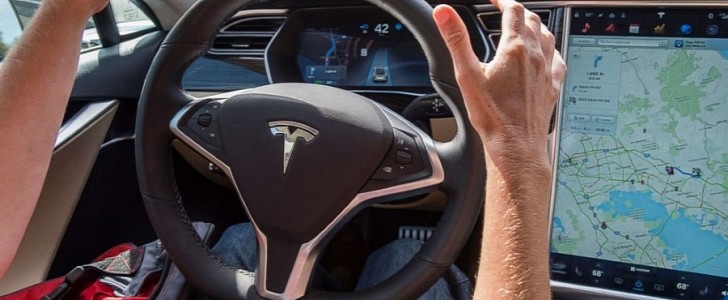We’re still years away from Level 5 autonomy, but there's no better time than the present to plan for when the inevitable happens. The UK is starting discussions on how to regulate autonomous vehicles (AVs) and one proposition relegates the human operator, now no longer necessary, to a user in charge.
In a report by the Law Commission, two types of AVs are being considered: one that is fully self-driving outside of cities and on the highway but requires a human operator within city limits, and another that is fully self-driving at all times but is monitored remotely and is part of a fleet of vehicles for ride-sharing. The AV imagined by most, the kind you just jump in and set off without a care in the world because it is fully capable of taking you to your destination, is not even mentioned.
Under proposed plans, the human operator – what we call driver today – would be relegated to a user in charge. He or she would no longer be liable in case of an accident or traffic violations, which would mean the maker of the vehicle would be punishable by law once cause was established, The Telegraph reports.
The traffic violations for which drivers are ticketed today, like speeding, reckless driving, or running red lights, would no longer apply. This means users will be able to sleep, eat or spend time scrolling Facebook while inside the vehicle, though they’d still have to refrain from boarding it under the influence.
In the case of individual owners, they will still be held responsible for incidents occurring within city limits or in those cases when they fail to perform accordingly when the system passes over responsibility (for example, in bad weather). Lawmakers are considering a 10 to 40-second transition time between computer and human operator, to allow the latter to get their bearings.
Efforts need to be made to ensure constant improvement of the technology, and this includes an aviator-style “no blame” culture, even though manufacturers and directors can be held responsible for an accident because accidents are bound to happen, at least at first.
“Eventually, someone will be killed or seriously injured by an AV. The victim will be a real person – their picture will appear in the media, inspiring considerable sympathy,” the report notes. “In these circumstances, developers, regulators and politicians will need to make the case for AVs, producing figures showing an overall decline in injury rates. This may not be an easy sell. Robust data will be needed.”
Under proposed plans, the human operator – what we call driver today – would be relegated to a user in charge. He or she would no longer be liable in case of an accident or traffic violations, which would mean the maker of the vehicle would be punishable by law once cause was established, The Telegraph reports.
The traffic violations for which drivers are ticketed today, like speeding, reckless driving, or running red lights, would no longer apply. This means users will be able to sleep, eat or spend time scrolling Facebook while inside the vehicle, though they’d still have to refrain from boarding it under the influence.
In the case of individual owners, they will still be held responsible for incidents occurring within city limits or in those cases when they fail to perform accordingly when the system passes over responsibility (for example, in bad weather). Lawmakers are considering a 10 to 40-second transition time between computer and human operator, to allow the latter to get their bearings.
Efforts need to be made to ensure constant improvement of the technology, and this includes an aviator-style “no blame” culture, even though manufacturers and directors can be held responsible for an accident because accidents are bound to happen, at least at first.
“Eventually, someone will be killed or seriously injured by an AV. The victim will be a real person – their picture will appear in the media, inspiring considerable sympathy,” the report notes. “In these circumstances, developers, regulators and politicians will need to make the case for AVs, producing figures showing an overall decline in injury rates. This may not be an easy sell. Robust data will be needed.”

